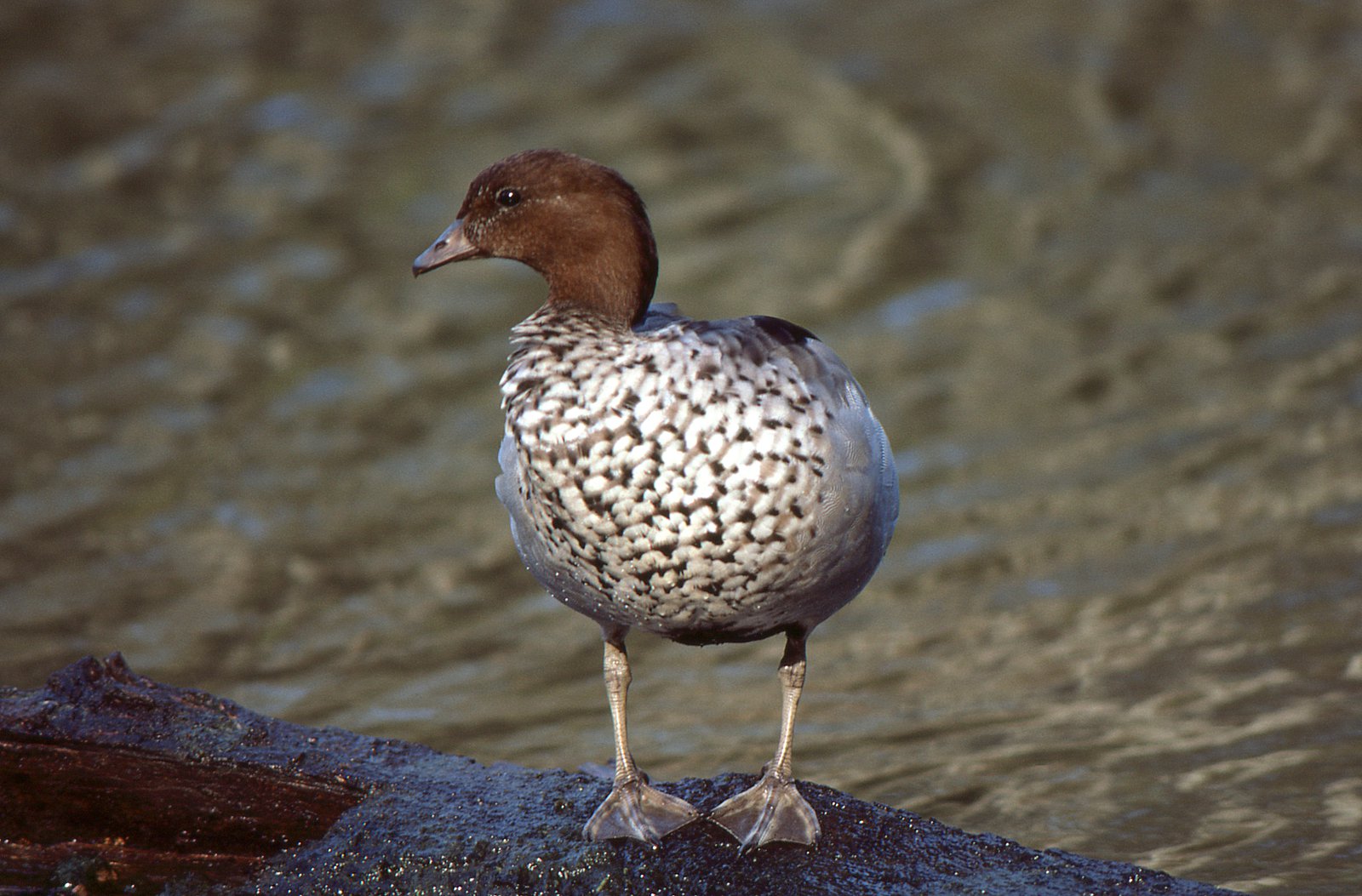Australian Wood Duck
Maned Duck or Maned Goose
The Whistling duck

© Australian Museum
Like other waterbirds, the Australian Wood Duck hatches with a covering of waterproof down and can enter the water almost straight away.
Identification
The Australian Wood Duck is a medium-sized 'goose-like' duck with a dark brown head and a pale grey body with two black stripes along the back. Males have the darker head and a small dark mane, with a speckled brown-grey breast and a black lower belly and undertail. The females have a paler head with two white stripes, above and below the eye, a speckled breast and flanks, with a white lower belly and undertail. In flight, the wings are pale grey above, contrasting with black wingtips, and have a noticeable white bar on the underside (the secondaries). They walk easily on land and may be seen perching on logs and in trees. They will only take to open water when disturbed.
Habitat
The Australian Wood Duck is found in grasslands, open woodlands, wetlands, flooded pastures and along the coast in inlets and bays. It is also common on farmland with dams, as well as around rice fields, sewage ponds and in urban parks. It will often be found around deeper lakes that may be unsuitable for other waterbirds' foraging, as it prefers to forage on land.
Distribution
The Australian Wood Duck is widespread in Australia, including Tasmania.
Feeding and diet
The Australian Wood Duck eats grasses, clover and other herbs, and occasionally, insects. It is rarely seen on open water, preferring to forage by dabbling in shallow water, or in grasslands and crops.
Communication
Females have long, loud, rising: 'gnow?' while male calls are shorter and higher pitched. Flocks chatter when feeding.
Breeding behaviours
The Australian Wood Duck forms monogamous breeding pairs that stay together year round. It nests in tree holes, above or near water, often re-using the same site. Both parents feed young and young birds remain with them up to a month after fledging.
- Breeding season: September to November in the south; after rain in the north.
- Clutch size: Eight to ten
- Incubation: 28 days
- Time in nest: 57 days
Economic impacts
The Australian Wood Duck has benefited from the creation of dams and irrigated crops on farmlands. It can sometimes damage crops and pastures.
References
- Marchant, S. and Higgins, P.J. (eds). 1993. Handbook of Australian, New Zealand and Antarctic Birds. Vol 1B (Ratites to Ducks), Oxford University Press, Sydney.
- Pizzey, G. and Knight, F. 1997. Field Guide to the Birds of Australia. Angus and Robertson, Sydney.
- Simpson, K and Day, N. 1999. Field guide to the birds of Australia, 6th Edition. Penguin Books, Australia.


